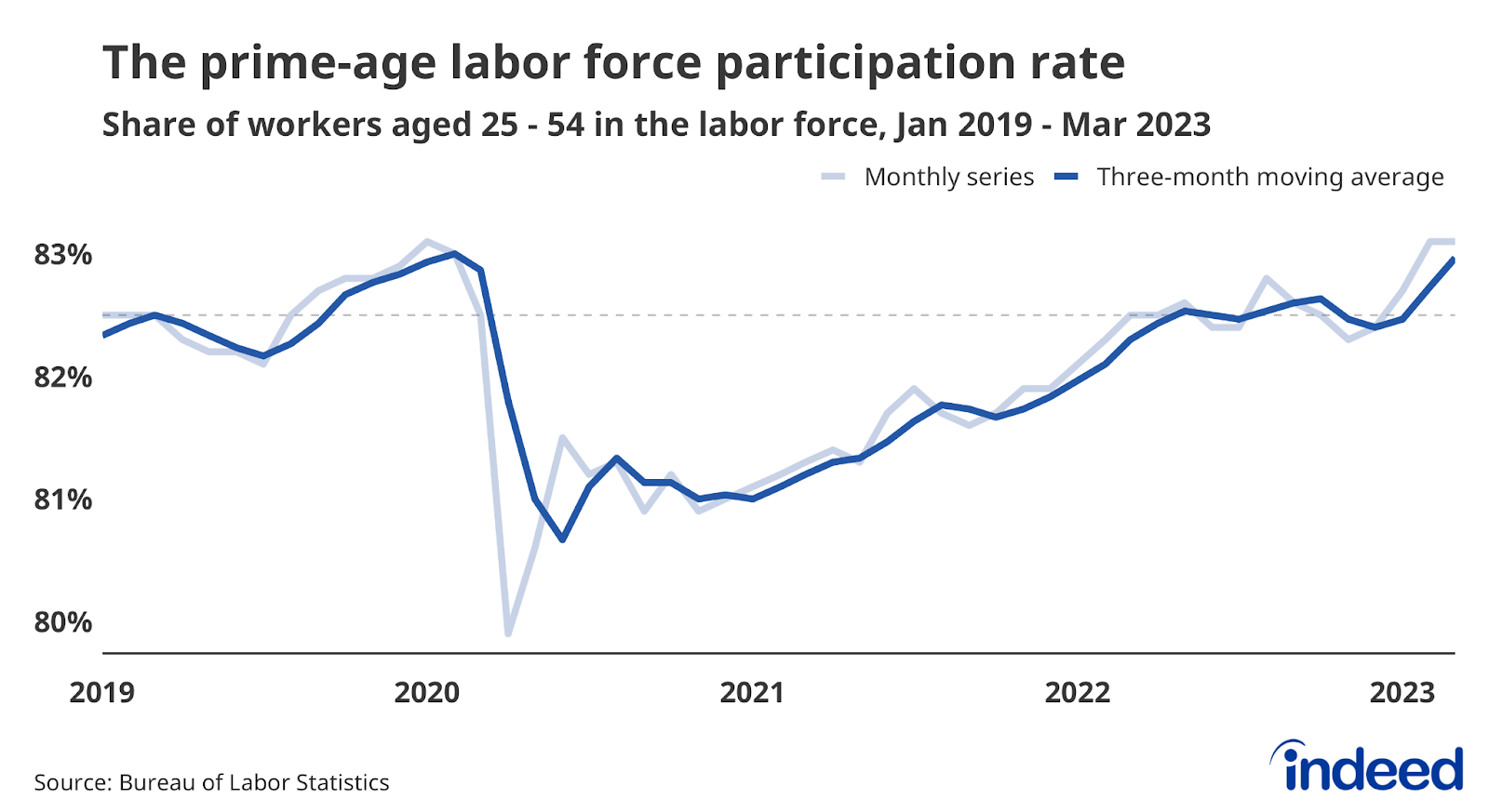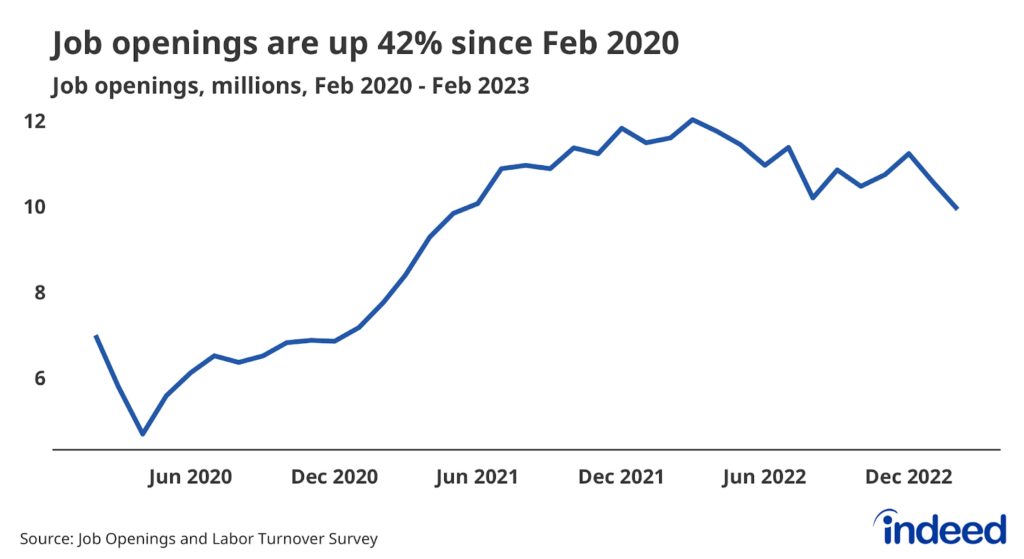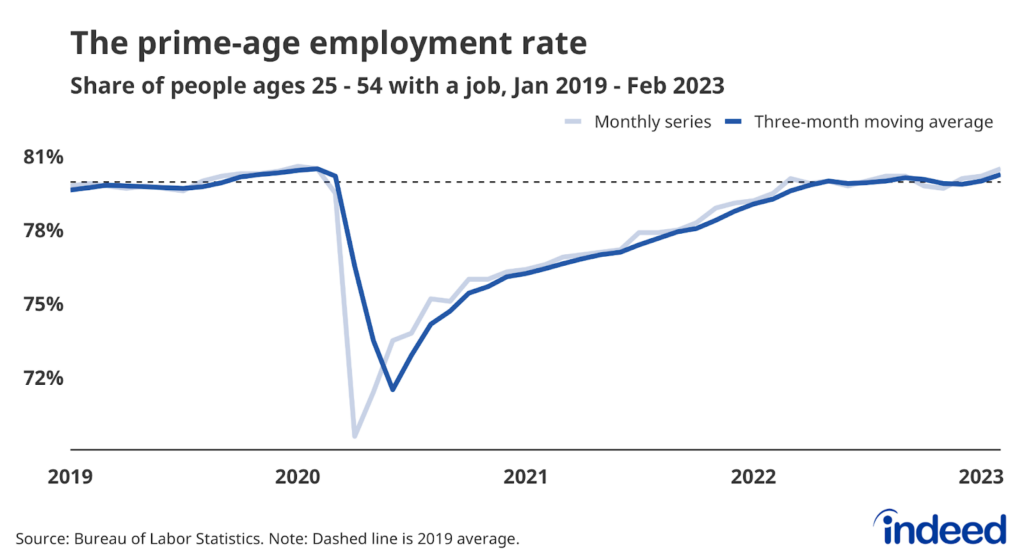Key Points:
- U.S. employers added 236,000 jobs in March and the unemployment rate ticked down to 3.5%, according to data from the Bureau of Labor Statistics.
- The share of workers ages 25 to 54 with a job hit 80.7% in March, its highest level since May 2001.
- Wages are still growing at a robust pace, but are clearly slowing down. Average hourly earnings for all workers grew at a 3.2% annualized rate over the past three months, down from 4.9% in December.
The US labor market has lost some speed, but all indications are that it’s slowing down not stalling. And even if employment isn’t growing at the pace we saw last year, its speed is still rapid. Demand for new hires is easing, but it’s clearly strong enough to bring workers back into the labor market. The return of these workers, in addition to easing employer demand, is leading to a clear moderation in wage growth. While the report isn’t perfect, it paints a picture of a still-robust labor market in which unemployment remains near historic lows, and the share of prime-age workers with a job is at its highest level in more than two decades.
The hiring pace of last year is well behind us. But average payroll gains of 345,000 jobs in the past three months—more than triple the pace needed to keep up with population growth—is nothing to sneeze at. The combination of this quick hiring tempo and low unemployment has lead to rising labor force participation and higher employment-to-population ratios. The share of workers ages 25 to 54 with a job hit 80.7% in March, its highest level since May 2001. It may have taken longer than many expected, but we are now seeing that strong labor demand has been and is drawing more people into the labor market.
Wages are now clearly decelerating, although it will be important to get confirmation of this trend in other data. Average hourly earnings for all workers grew at a 3.2% annualized rate over the past three months, down from 4.9% in December, a stark slowdown that’s more rapid than the trend in other data. It’ll be important to see if other wage data, like the Employment Cost Index released later this month, confirms this trend.
Rather than an abrupt and jarring end to the jobs party of the past couple of years, the nation’s job market is instead gradually turning the lights back up and the music down in a smooth transition from weekend to weekday that looks, for now, to be largely sustainable and healthy. While it’s unclear if the Federal Reserve will still play its traditional role and pull the punchbowl away, the party is already winding down—there’s no need to crash it.



